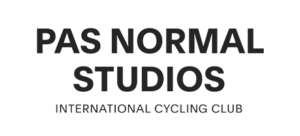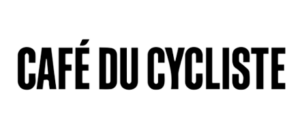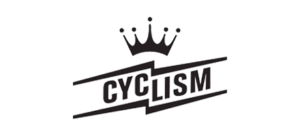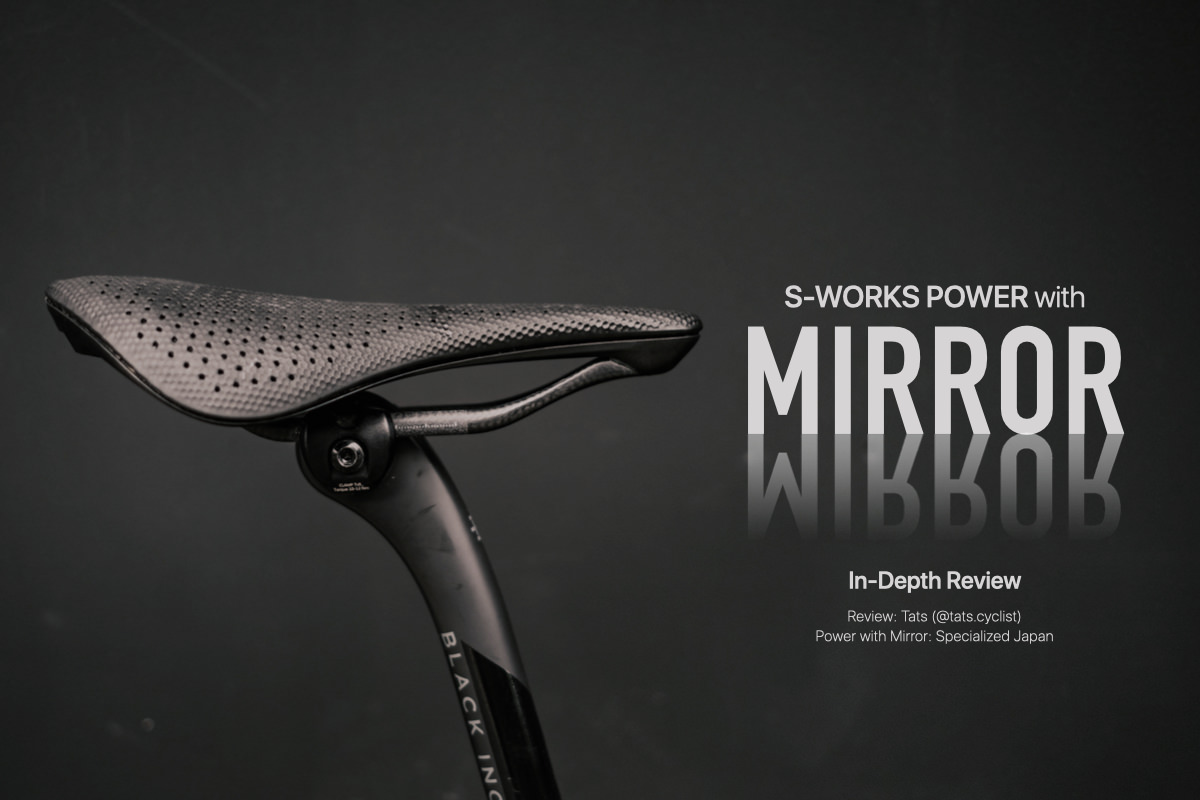
Specialized’s Power saddles have established the “Short Nose” category of cycling saddles. The Power series is now joined by the 3D printed “Power with Mirror” saddle.
As soon as I tried the Mirror, I realized that if the short nose was the first impact that the saddle has had in recent years, the 3D printing process could be the second innovation. Power has freed me from the pain of the saddle, and I feel that Power with Mirror is a new option for those who have been freed from it.
I will review in detail what the 3D printing process has brought to the table and its performance.
text by Tats(@tats_lovecyclist)
*The Power with Mirror used in this review is provided by Specialized Japan, and the content of the review is neutral after two months of driving with Mirror.
Contents
1. Power with Mirror Overview
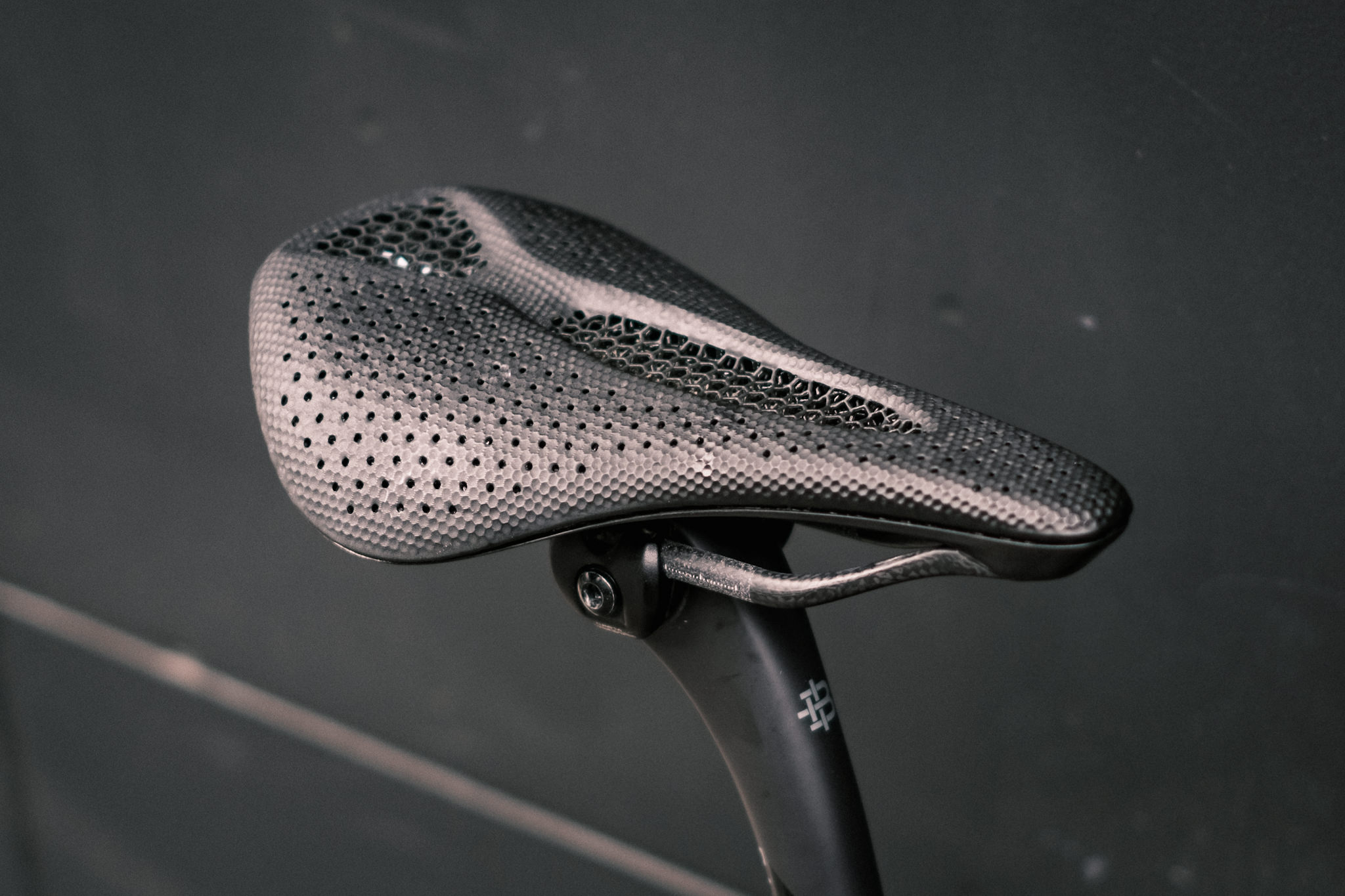
| S-Works Power with Mirror | |
| Release Date | June 2020 |
| Weight | 190g (143mm) / 194g (155mm) |
| Seat | 3D printing process of liquid polymer |
| Shell | FACT carbon fiber shell |
| Rail | Ultra-light oversized FACT carbon rails. |
| Price | $450 |
The S-Works Power with Mirror saddle, a 3D printed saddle made of liquid polymer, is similar to the “Adaptive” saddle by Fizik, which was released in March, but Specialized was the first to develop the saddle. Mirror is the only saddle to combine a short nose with 3D printing.
2. Comparison with S-Works Power
We will clarify Mirror’s features by comparing it to S-Works Power, the leading short saddle model.
Surface
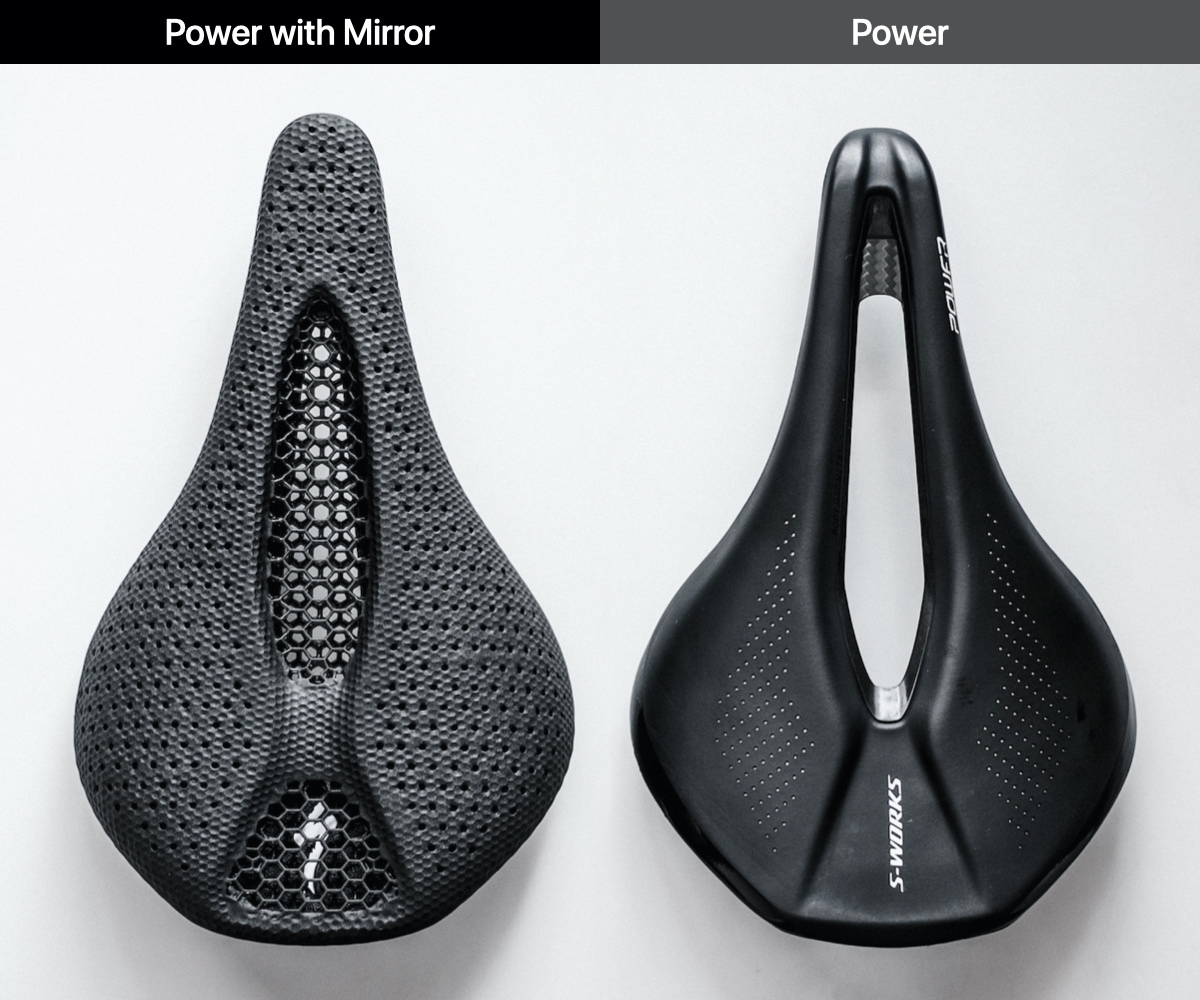
Both are similar in size and shape, but Mirror has a matte, lattice-like texture.
In terms of design, Mirror is great in that it is not immediately obvious that it is a Specialized product, with only an “S” logo inside. It can be matched to any frame.
Reverse
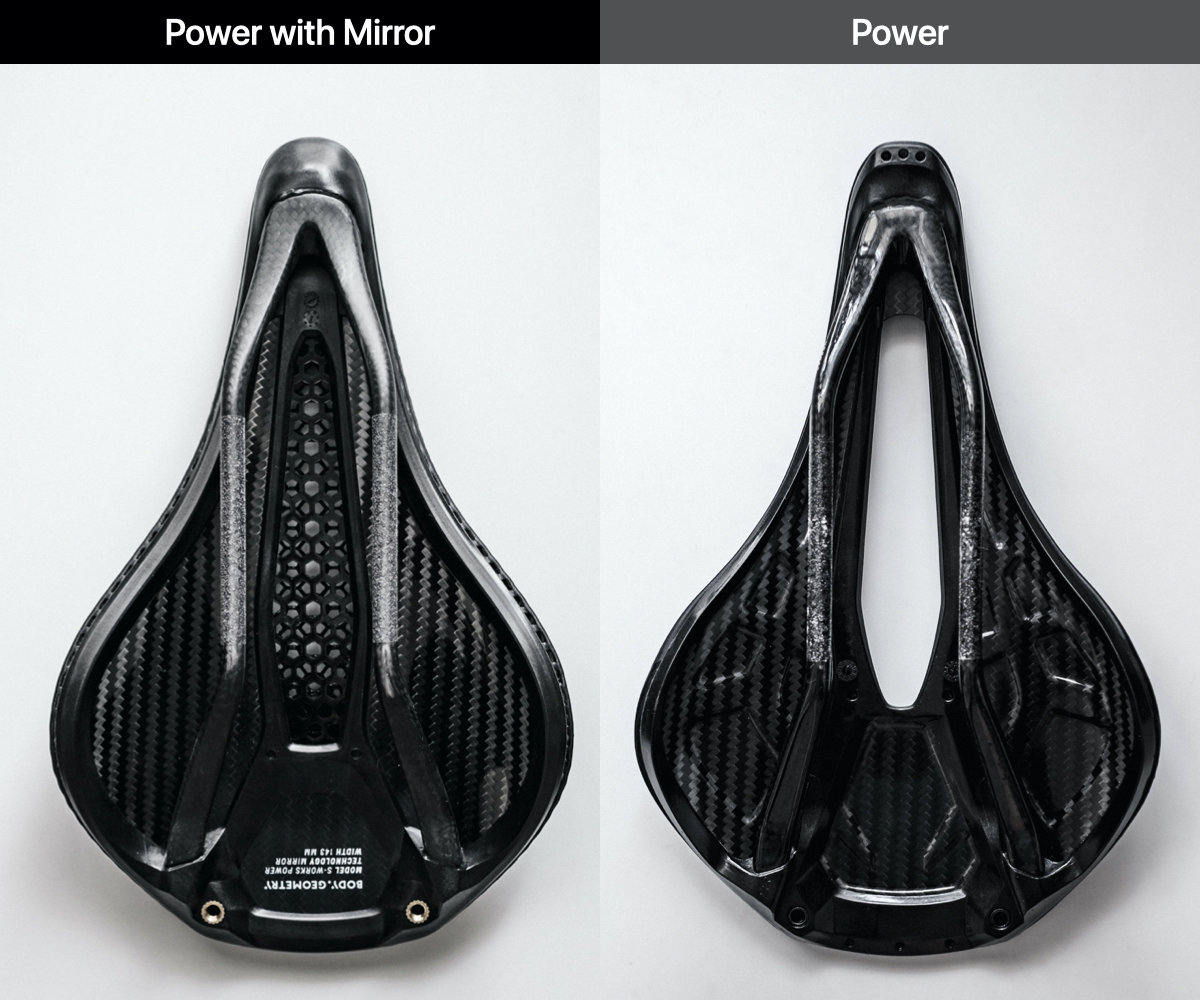
The back side has a FACT carbon shell and carbon rails.
Like other Specialized saddles, it has a SWAT-compatible mount.
Back
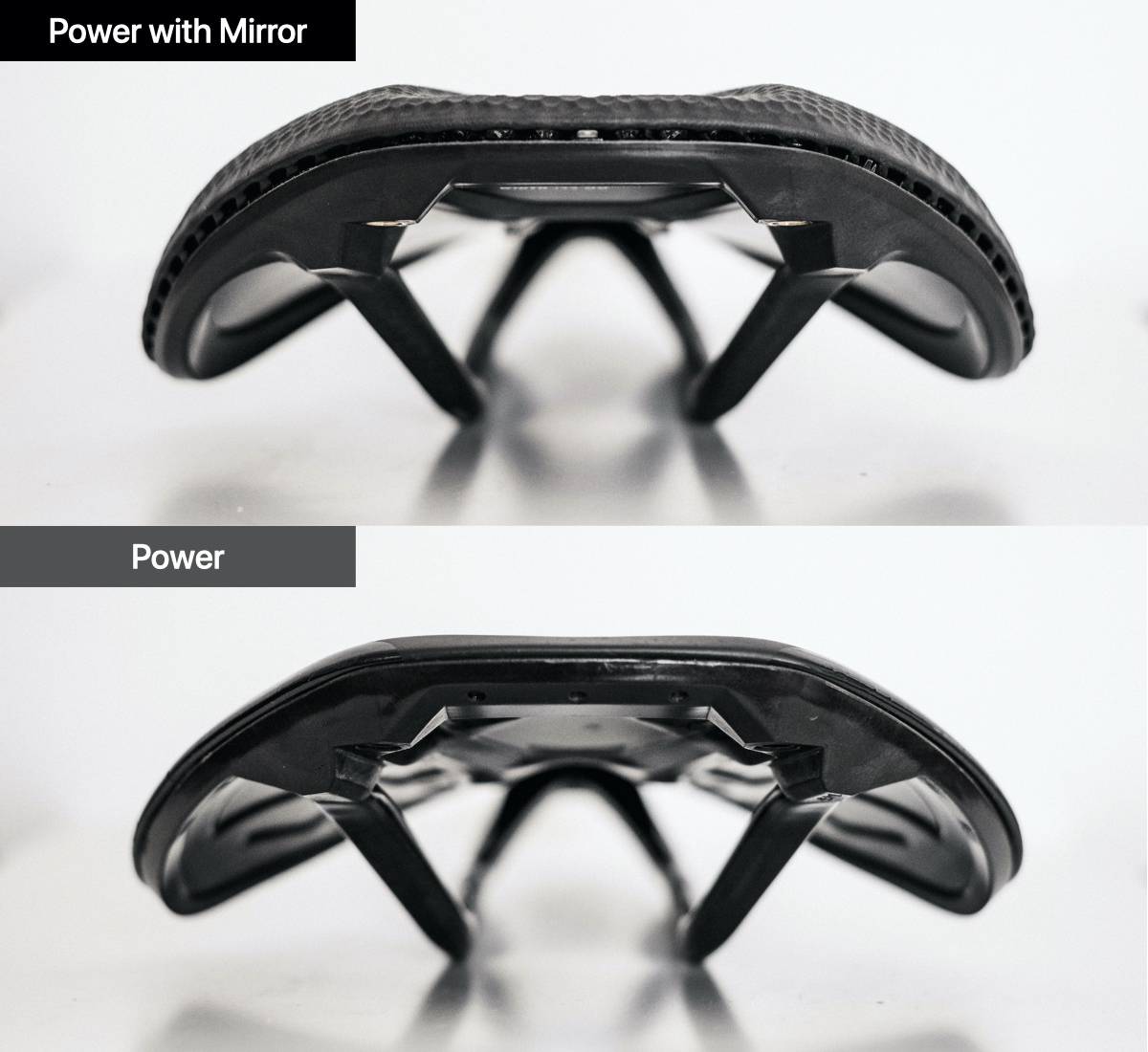
Both saddles are flat, but looking at the seat, the Mirror is about 5mm thicker than the Power, so if you are switching from the Power, you will need to adjust the saddle height about 2-3mm lower to account for the sinkage.
Seat shape
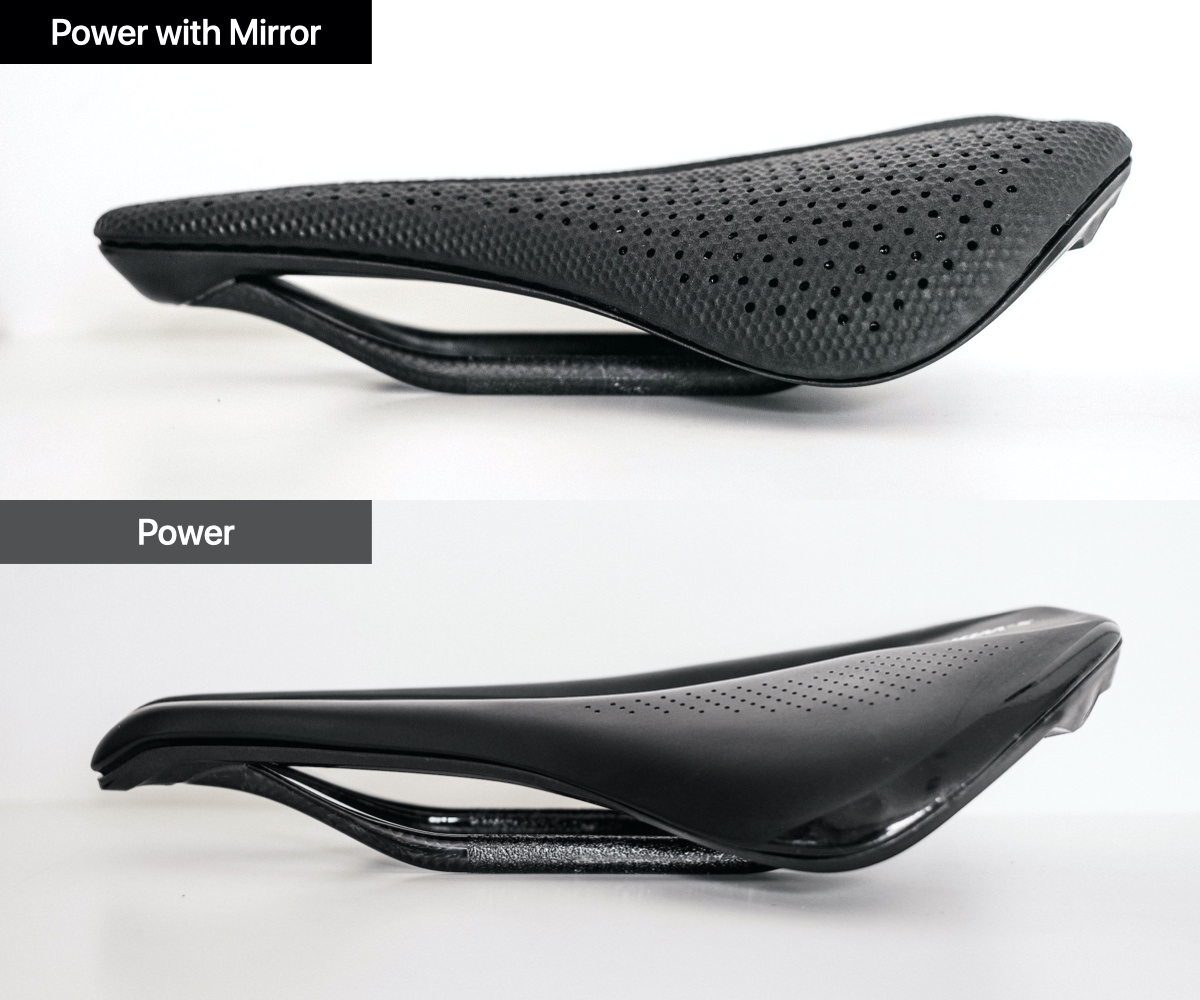
Mirror’s seating surface is softer on the nose and more resilient on the back side. Compared to the Power foam, which is homogeneous in hardness, this is a completely different product.
Also, looking at the nose side, Mirror is flatter, but the compression is softer, allowing for a deeper forward lean.
Weight
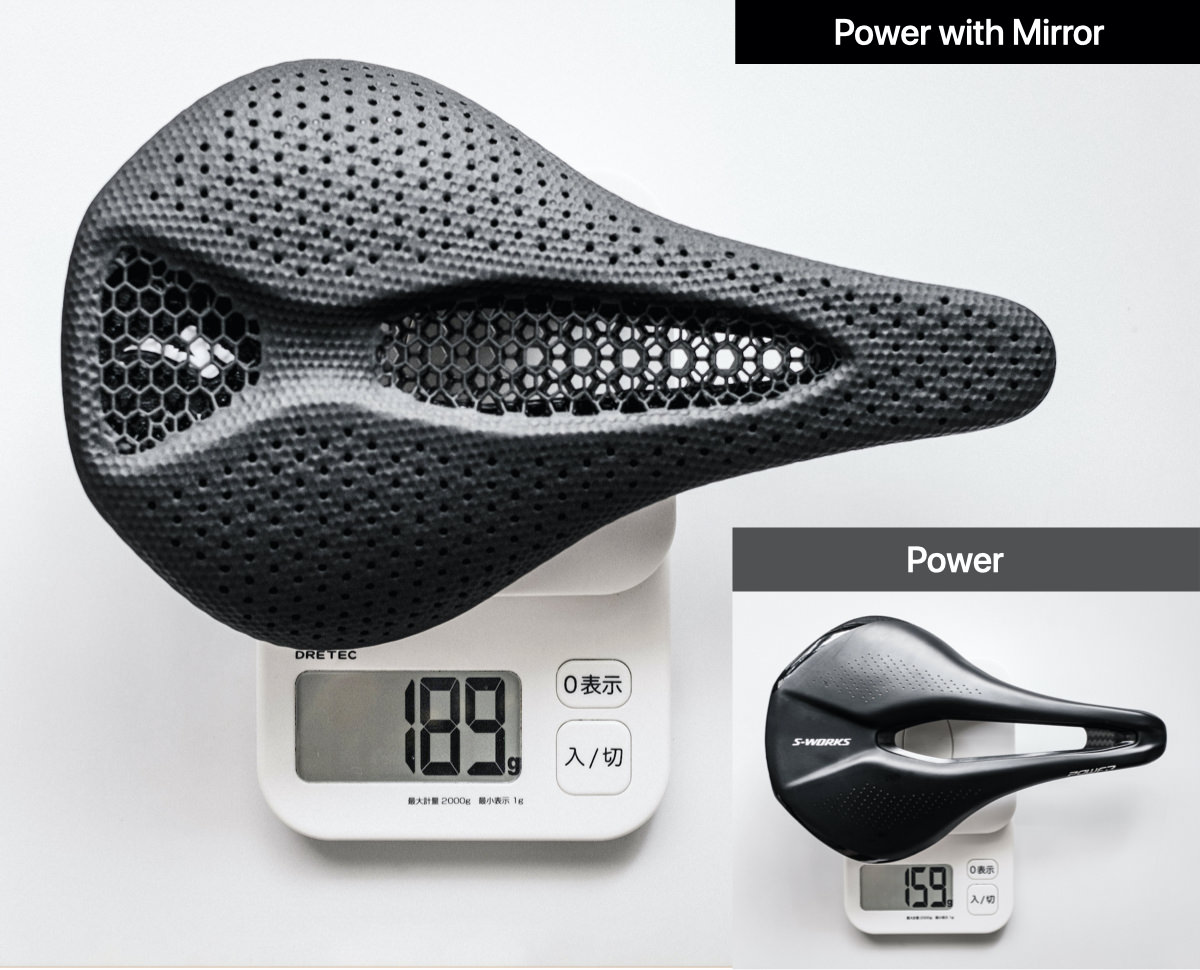
The weight of the 143mm size is 189g (190g in the catalog) in actual measurement. The lattice shape improves ventilation, but this does not seem to translate into weight reduction.
If you are looking for lightness alone, the Power’s 159g (catalog value as well) is one of the lightest among all short saddles. In other words, Mirror’s intention is not to reduce weight.
* * *
While the outlines are similar, there is a difference between the Power foam seat and the Mirror 3D printed seat. Below is an item-by-item review of how this affects the actual ride.
*Saddles feel differently depending on the width and shape of the pelvis, so my review may not apply to everyone, but it may be helpful for those who prefer a flat shape to a round shape, and for those who prefer a perforated or short saddle.
3. In-Depth Review
Score
| Mirror | Power | |
| Pedaling – flat | ★★★★★ | ★★★★☆ |
| Pedaling – climb | ★★★★★ | ★★★★★ |
| Grip | ★★★★★ | ★★★★☆ |
| Position Mobility | ★★★☆☆ | ★★★★☆ |
| Comfort | ★★★★★+ | ★★★★★ |
| Design | ★★★★★+ | ★★★★★ |
| Comprehensive Score | ★★★★★+ | ★★★★★ |
Scores relative to Power
Since switching to Mirror, I have tested it in different conditions, including long rides of about 140 km, rough forest roads, and hill climbs, and it has outperformed Power in almost every category.
In particular, the increased grip and enhanced pain tolerance are significant, with almost no blind spots.
Usability of Mirror
Saddle without making you aware of it
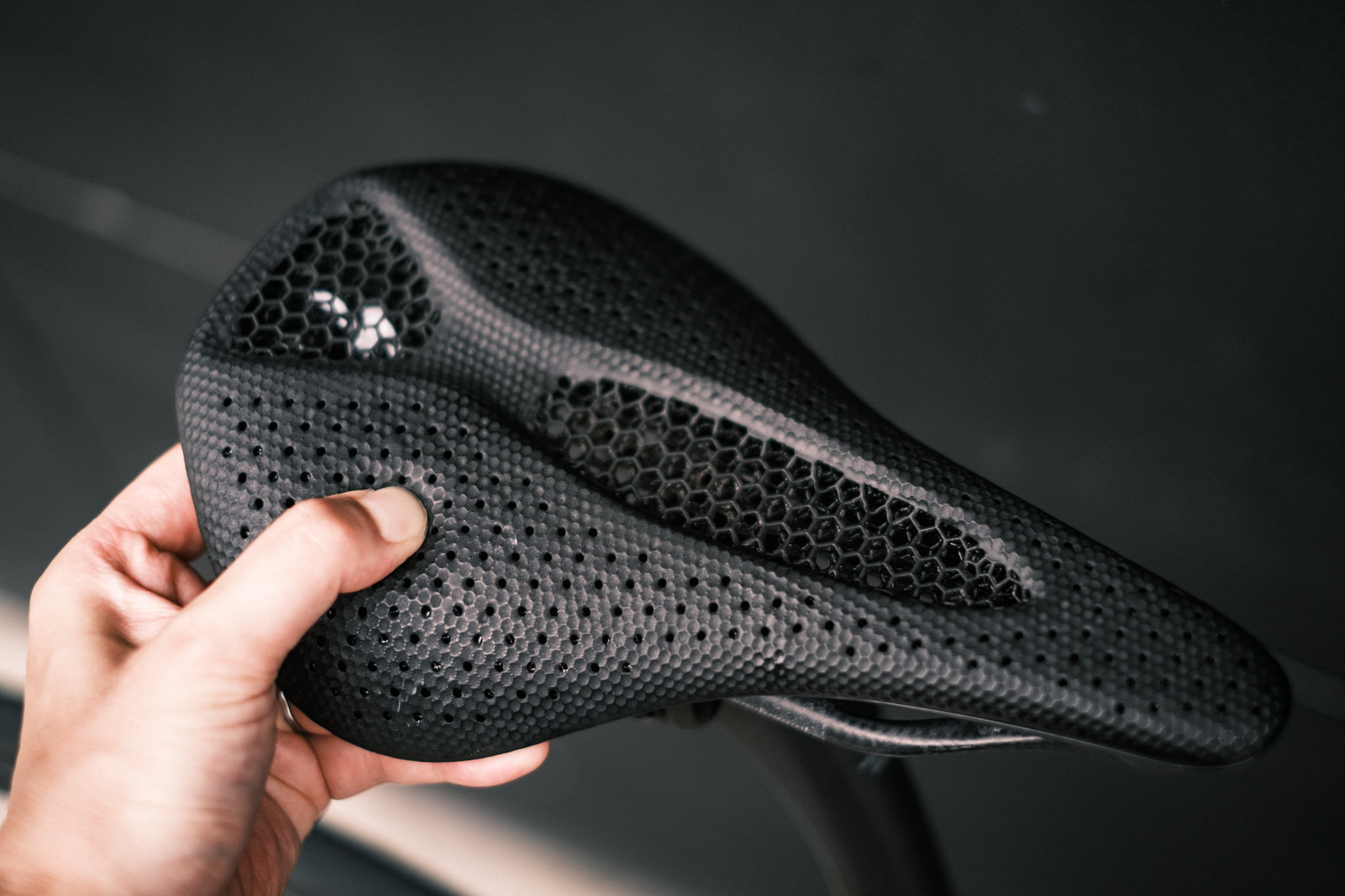
I think the requirement for a good saddle is that it not make you aware of the saddle during the ride.
If you become aware of the saddle while riding and a feeling of discomfort appears, such as “it hits me in the pubic bone area,” it is likely that the saddle will not fit you in the end.
As for Mirror, I completely forgot that I was “riding on a new saddle” for a while after replacing it. There is no element that makes me feel that uncomfortable.
As Mirror is so named because it reproduces the shape of your buttocks like a laminated mirror, the seat surface changes freely to match your buttocks. The feeling of getting into the saddle as if you were wrapped in it is something I have never experienced in any other model.
However, because the saddle is more resilient than it looks, it does not fluff up like a thick foam saddle, and pedaling performance is hardly compromised (although a powerful cyclist might be bothered by the sinking feeling when using it in a race).
Overwhelming comfort
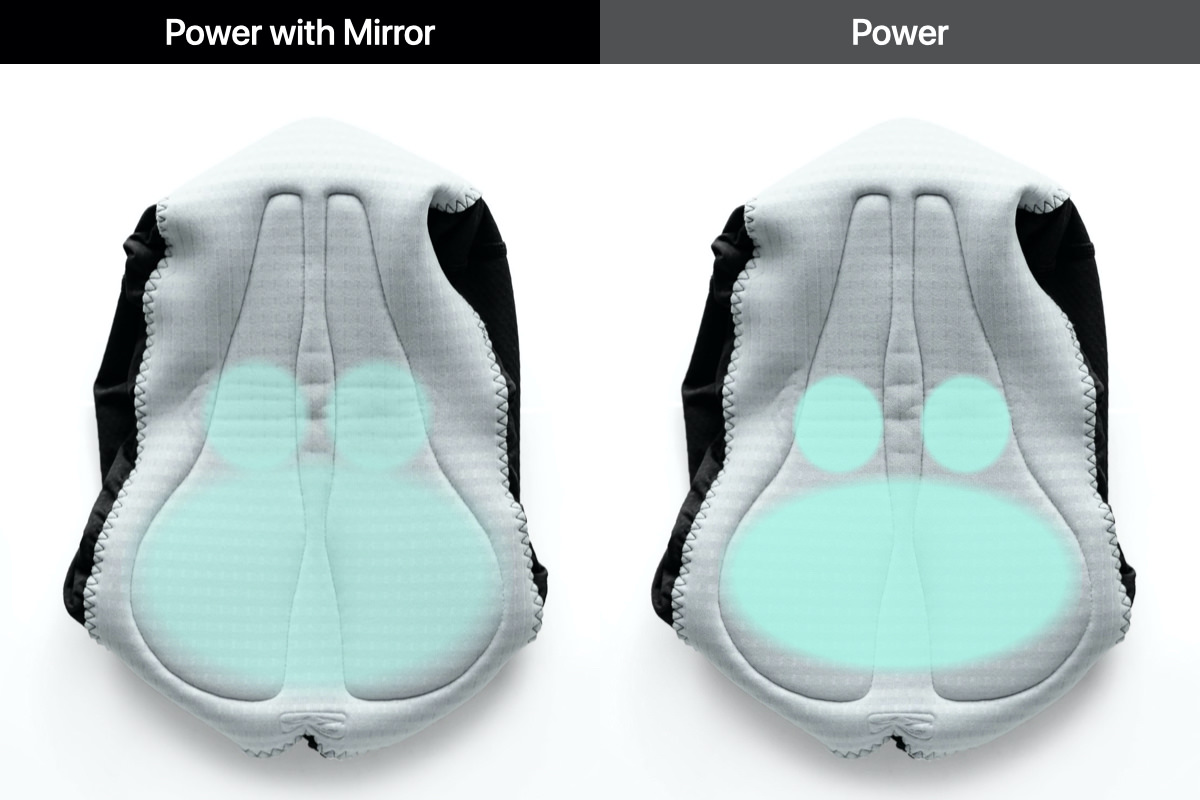
This diagram shows sensibly where pressure is applied on the seating surface.
Both saddles are similar in the areas where pressure is applied, but it is clear that Mirror distributes the force better by covering a larger area.
Although the Power was also an almost painless saddle, when compared, the Mirror is overwhelmingly comfortable and does not cause pain even after a longer ride.
When leaning forward deeply, the load is applied closer to the nose than in this figure, but the nose side of the seat is softer, so there is no pressure on the crotch as in the Power.
Strong grip
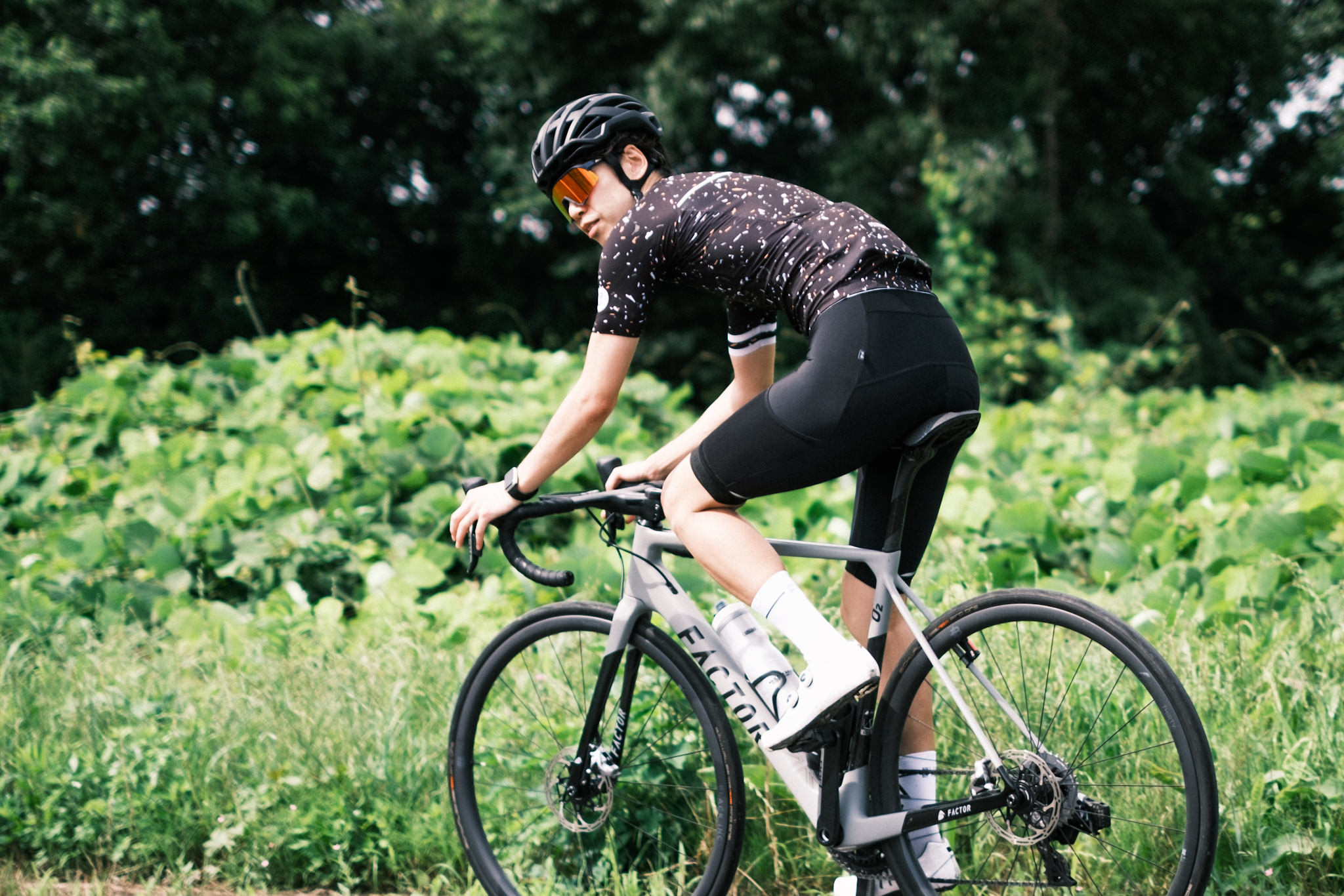
The only complaint I had with the Power was that the surface was slippery. While the ease of moving the position forward and backward is an advantage, I was concerned that the seat surface felt unstable when changing pedaling.
The Mirror’s butt-replicating seat and grid-like surface eliminates this problem, and pedaling is as stable as on the rounded Power Arc.
Conversely, it is harder to move back and forth, but not to the point of frustration, as the grip is as good as the Prologo’s short saddle.
High-quality product design
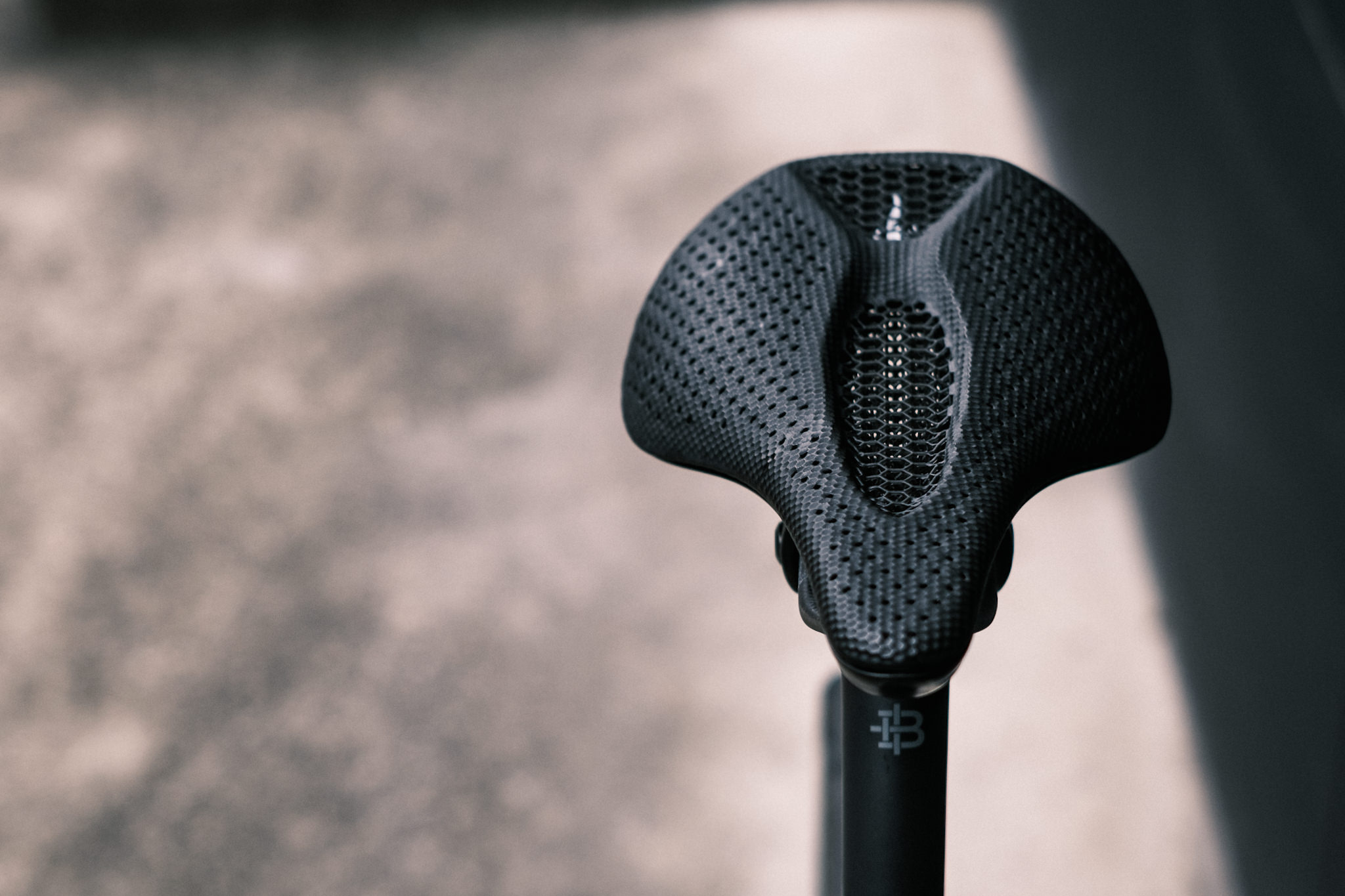
Perhaps because our eyes were accustomed to the dimpled surface by Fizik’s Adaptive, which preceded it, the initially uncomfortable dimpled surface now gives the impression of a high-quality design that evokes a new generation of saddles.
The matte, beautiful shape, which will become the next standard, is also pleasing to the eye.
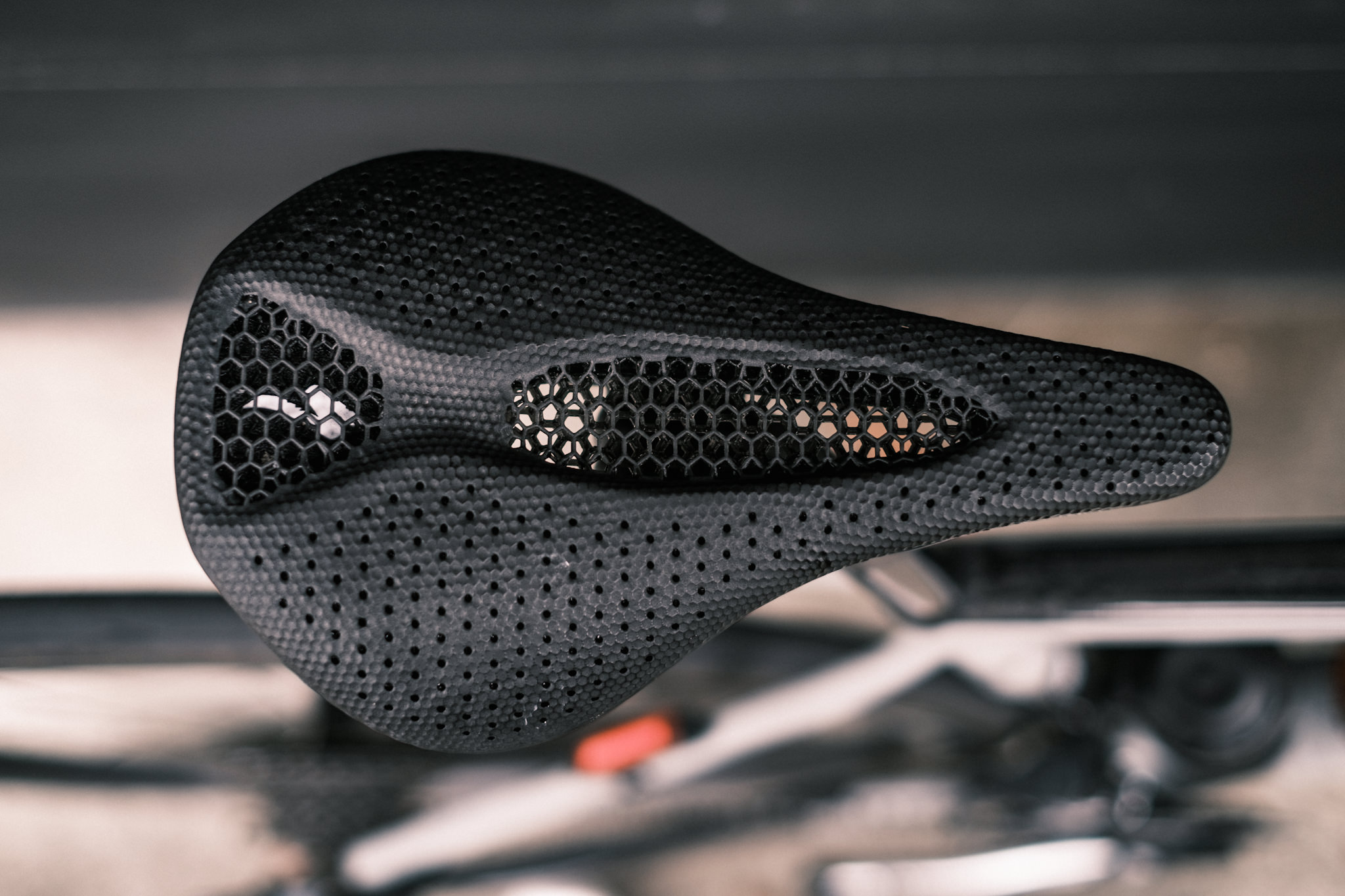
However, when riding after rain (which is inevitable due to its structure), mud and dirt will get inside. In this case, washing it with water using a hose will clean it.
4. Mirror beyond the pain of the saddle
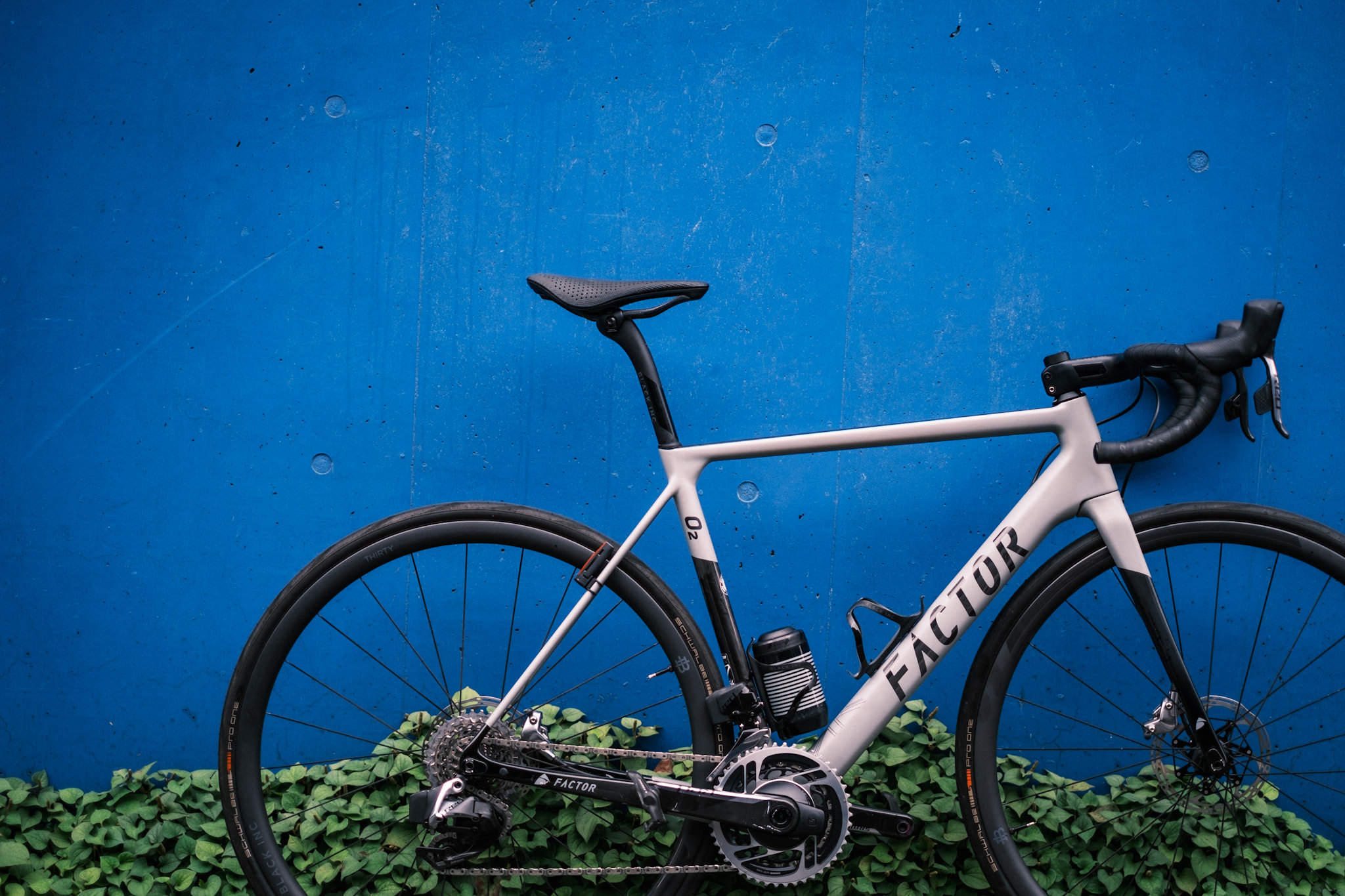
Mirror still makes my heart flutter every time I put my butt on it, the same feeling I had when I first started using Power.
With the Mirror, you get “unparalleled comfort” and “great grip on the seat“.
It is the perfect saddle for long riders, triathletes, and gravel riders who spend a lot of time on the saddle, as well as for riders who ride on rough roads, and it is also the perfect solution for riders like me who were unhappy with the grip of the Power.
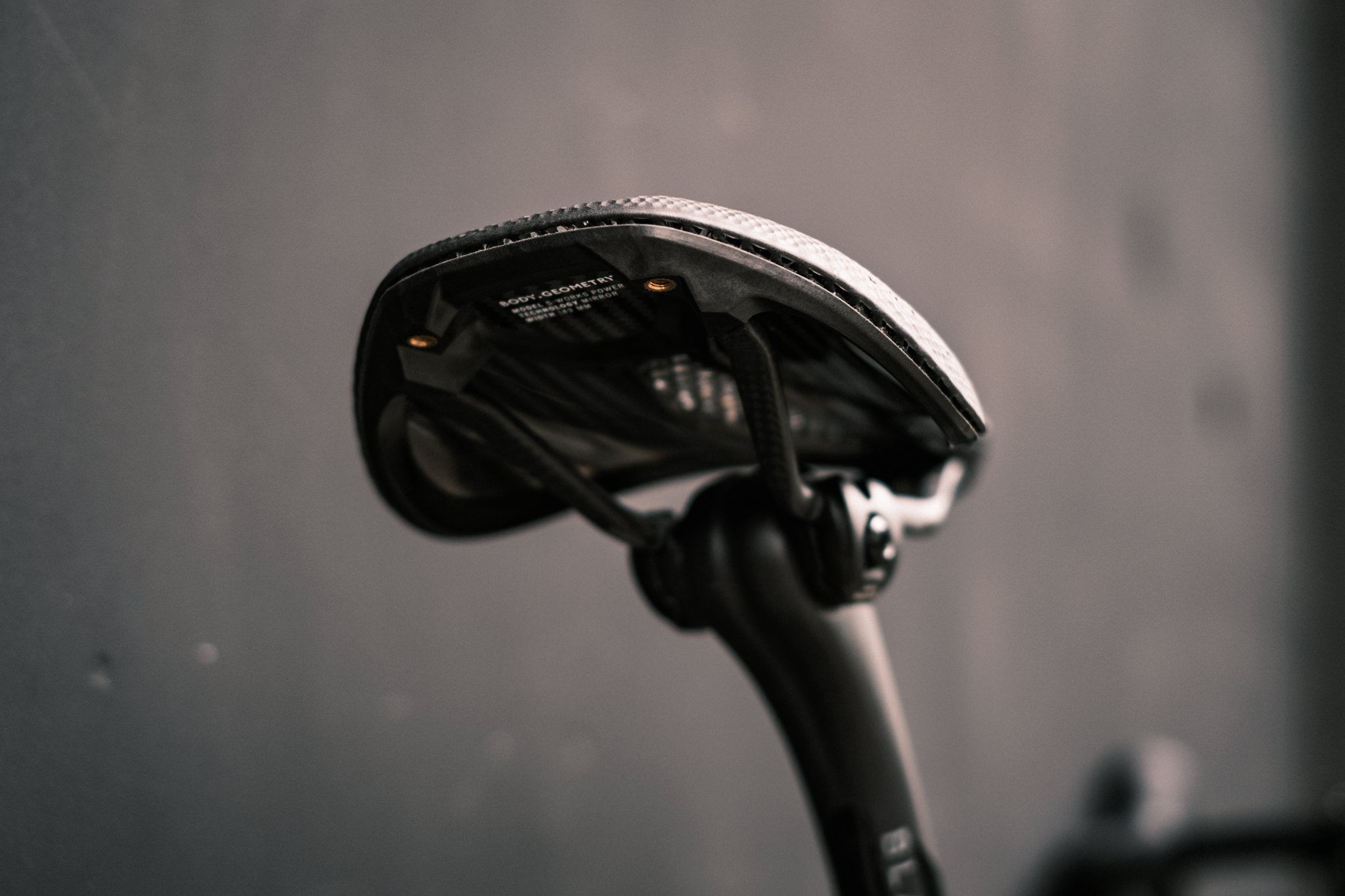
Mirror was commercialized in 10 months after 70 iterations of 3D rendering, printing, and testing.
The Power series has ended the endless saddle choices for many cyclists, but the Mirror’s potential is more than enough to cover even more cyclists.
At $450, it is not cheap at all, but the value for money is the “End of Discussion” of the saddle world. It is without a doubt the pinnacle of short saddles and will be used as a benchmark by many brands in the future.
Highs
- – No pain at all
– Pedaling is far more stable.
– Stealth design blends in with any frame.
Lows
- – Carbon rails are slightly heavy (189g)
– Muddy dirt gets inside.
Author
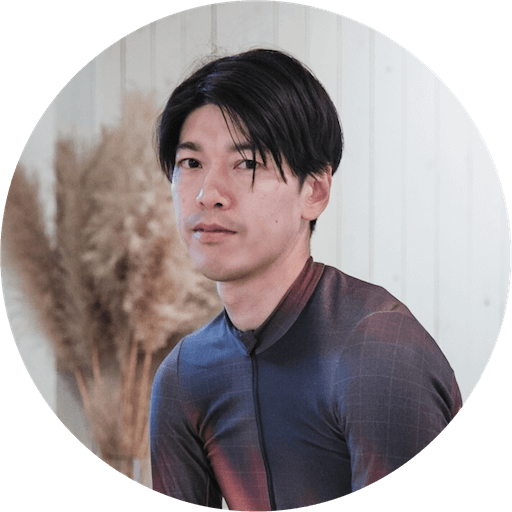 |
Tats Shimizu(@tats_lovecyclist) Editor in Chief. Having been riding sports bikes for 10 years. He likes to unravel the trends in the sport bike industry, especially road bikes, from a marketing perspective. At the same time, he has extensive friendships with cycling apparel brands from around the world and proposes various styles through the media. His main bikes are Factor O2 (road) and LS (gravel). |



